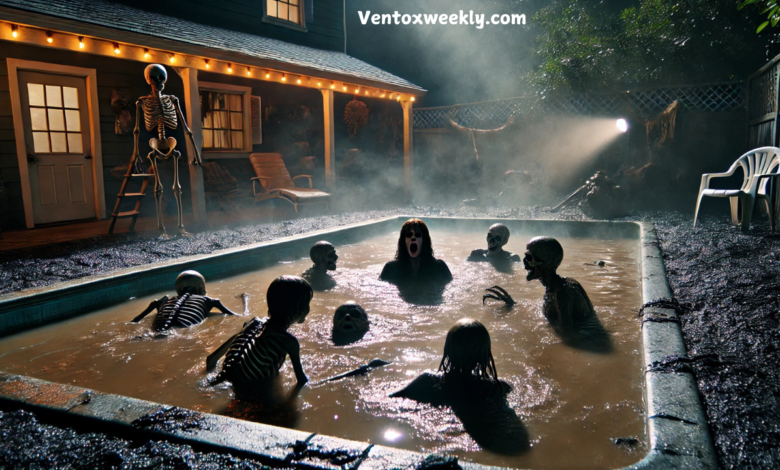The 1982 Movie Poltergeist Used Real Skeletons As – Tymoff: Unveiling the Shocking Truth Behind the Scenes

The 1982 horror classic Poltergeist remains one of the most chilling films in Hollywood history. Known for its spine-tingling storyline, supernatural elements, and terrifying visuals, the film also carries a dark secret that fascinates fans and cinephiles alike. The shocking revelation that real human skeletons were used during its production has sparked controversy, ethical debates, and even theories of a curse. This article will investigate the truthfulness of this allegation, the reasons for such a decision, and its impact on the film’s legacy.
Why Were Real Skeletons Used in Poltergeist?
The decision to use real skeletons in Poltergeist was more unusual in Hollywood during the early 1980s than one might think. Here are the primary reasons:
Cost-Effectiveness
In the 1980s, creating realistic fake skeletons was an expensive endeavor. High-quality plastic or resin skeletons were not readily available or were prohibitively expensive. Surprisingly, purchasing real human skeletons from medical supply companies was cheaper and more practical.
Special effects artist Craig Reardon, who worked on the film, later revealed that using real skeletons was a common practice in the industry, especially for scenes that demanded anatomical accuracy. For Poltergeist, the skeletons used in the now-infamous swimming pool scene were sourced from medical suppliers.
The Controversial Pool Scene
One of Poltergeist’s most iconic and unsettling scenes is when Diane Freeling, played by JoBeth Williams, is trapped in a muddy swimming pool surrounded by skeletons. What made this scene particularly chilling wasn’t just the cinematography or the eerie atmosphere—it was the fact that the skeletons weren’t props but actual human remains.
JoBeth Williams’ Shock
Williams later admitted that she was unaware the skeletons were real during filming. She expressed her discomfort upon learning the truth, stating that she might have refused to participate in the scene had she known. The revelation added an unsettling layer to her performance and the audience’s reaction to the scene.
Ethical Considerations: A 1980s Practice
While the use of real skeletons might seem appalling today, it was not entirely unheard of in the film industry during the 20th century. In the past, actual human remains were often used in movies and other media because they were accessible and offered an authentic look that was hard to replicate with props. However, this practice raises significant ethical questions:
Respect for the Deceased
The idea of using human remains for entertainment purposes can be seen as disrespectful to the dead. Although the skeletons were likely obtained legally from medical sources, their use in a horror film has been criticized for being insensitive.
Psychological Impact on Actors
Knowing real skeletons surrounded them reportedly unsettled some cast members. JoBeth Williams and Zelda Rubinstein (who played Tangina) expressed discomfort with the decision. Rubinstein believed strongly in the supernatural and feared that disturbing human remains could invoke negative energy.
The Poltergeist Curse: Fact or Fiction?
The use of real skeletons in Poltergeist has been linked to the infamous “Poltergeist Curse.” This urban legend attributes tragic events and eerie occurrences involving the cast and crew to the film’s production.
Tragic Deaths of Cast Members
Two untimely deaths fueled the curse theory:
- Dominique Dunne (Dana Freeling): Shortly after the release of Poltergeist, Dunne was tragically murdered by her ex-boyfriend.
- Heather O’Rourke (Carol Anne): The young actress passed away at the age of 12 due to complications from a medical condition during the filming of Poltergeist III.
These tragedies and the knowledge of real skeletons being used led many to believe that the film was cursed.
On-Set Incidents
Bizarre accidents also plagued the production:
- Actor Oliver Robins nearly choked during a scene involving a mechanical clown.
- Zelda Rubinstein reported supernatural experiences on set, heightening fears among the cast and crew.
Supernatural Speculation
Some believe that disturbing human remains during production invited supernatural retaliation, contributing to the so-called curse. However, skeptics argue that these events were coincidental and unrelated to the skeletons.
The Legacy of Poltergeist’s Skeleton Controversy
The decision to use real skeletons has become integral to Poltergeist’s legacy. Fans continue to debate whether this was a practical choice, a shocking oversight, or an outright ethical misstep. Regardless, the story has cemented the film’s status as one of Hollywood’s most mysterious productions.
Impact on Horror Cinema
The authenticity of the real skeletons arguably enhanced the film’s horror, creating a sense of realism that artificial props might not have achieved. This decision set a precedent for filmmakers to strive for authenticity in practical effects, though modern ethics and technology have rendered such practices obsolete.
Shift in Industry Practices
Today, using actual human remains in films is heavily regulated. Special effects and CGI advancements have eliminated the need for such controversial practices. Modern filmmakers rely on hyper-realistic props and digital effects to create believable visuals.
FAQs About The 1982 Movie Poltergeist Used Real Skeletons As – Tymoff
Were real skeletons used in Poltergeist?
Yes, real skeletons were used in certain scenes, including the pool scene, as they were more cost-effective than realistic fake ones.
Why did the filmmakers choose real skeletons?
The primary reasons were cost and realism. Creating high-quality fake skeletons at the time was more expensive than sourcing real ones from medical suppliers.
Is the Poltergeist curse real?
The Curse is an urban legend fueled by tragic events involving the cast and crew. While many believe in the supernatural connection, skeptics attribute these events to coincidence.
Conclusion
The revelation that the 1982 movie Poltergeist used real skeletons as props has captivated audiences for decades. It adds an unsettling layer to the film’s already eerie reputation and has become a focal point in discussions about ethics in filmmaking. Whether seen as a practical choice, a controversial decision, or a harbinger of supernatural events, the use of real skeletons has undeniably shaped the legacy of Poltergeist. The film remains a classic in horror cinema, forever linked to its mysterious and haunting behind-the-scenes story.




